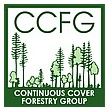Presentation – Investigating the Wildlife Benefits of CCF in Lowland Broadleaved Woodland
Speaker:

Christine Reid
Senior Woodland and Forestry Specialist
Natural England
Unex House
Peterborough, PE1 1NG
Website: www.naturalengland.org.uk
Biography:
I am Natural England’s Senior Woodland and Forestry specialist. I provide advice and training to NE staff and our partners on woodland and conservation issues across England – particularly on woodland SSSIs and ancient woodland. I am currently interested in promoting the restoration of replanted ancient woodland, the impact of tree diseases on wildlife, how woodlands are responding to climate change, and novel
Speaker:

Saul Herbert
Senior Reserve Manager
Wyre Forest NNR
Natural England
Biography:
I have been responsible for the management of the Wyre Forest National Nature Reserve for the last six years. We are delivering conservation focussed management over 500 ha of ancient oak woodland, and working to restore a similar area of ancient woodland from conifer plantation. We are establishing a range of long term monitoring programmes in the Wyre Forest to study the effects of silvicultural systems, broadleaved woodland restoration and habitat management on the wildlife of the forest.
Synopsis of Presentation:
Natural England is keen to explore what CCF management can deliver for woodland wildlife. This talk examines the needs of woodland wildlife and some of the reasons, as identified in recent research projects, why much woodland wildlife is in serious decline. The talk discusses two studies which are beginning at Cranborne Chase (Rushmore Estate) SSSI and the Wyre Forest (SSSI/NNR), two of the largest and most wildlife-rich lowland broadleaved woodlands in England. The objectives and methodologies being used to look at the effects on wildlife of implementing CCF on these sites are discussed. Their large size, management history and current management aims mean that it is possible to compare wildlife effects of a range of forest structures, in both established CCF systems and at the introduction of CCF into undermanaged woodland. Because of the ‘newness’ of CCF in lowland England, some innovative methods are being used to compare the effects of changing woodland structures on woodland birds, invertebrates (including those in the tree canopy)and reptiles. Only very limited study results are available at this stage: watch this space!
Conference Resource:
- Download/View Christine Reid and Saul Herbert’s Presentation [PDF, 3.0 MB]
- Watch Christine Reid and Saul Herbert’s Presentation [Youtube]


